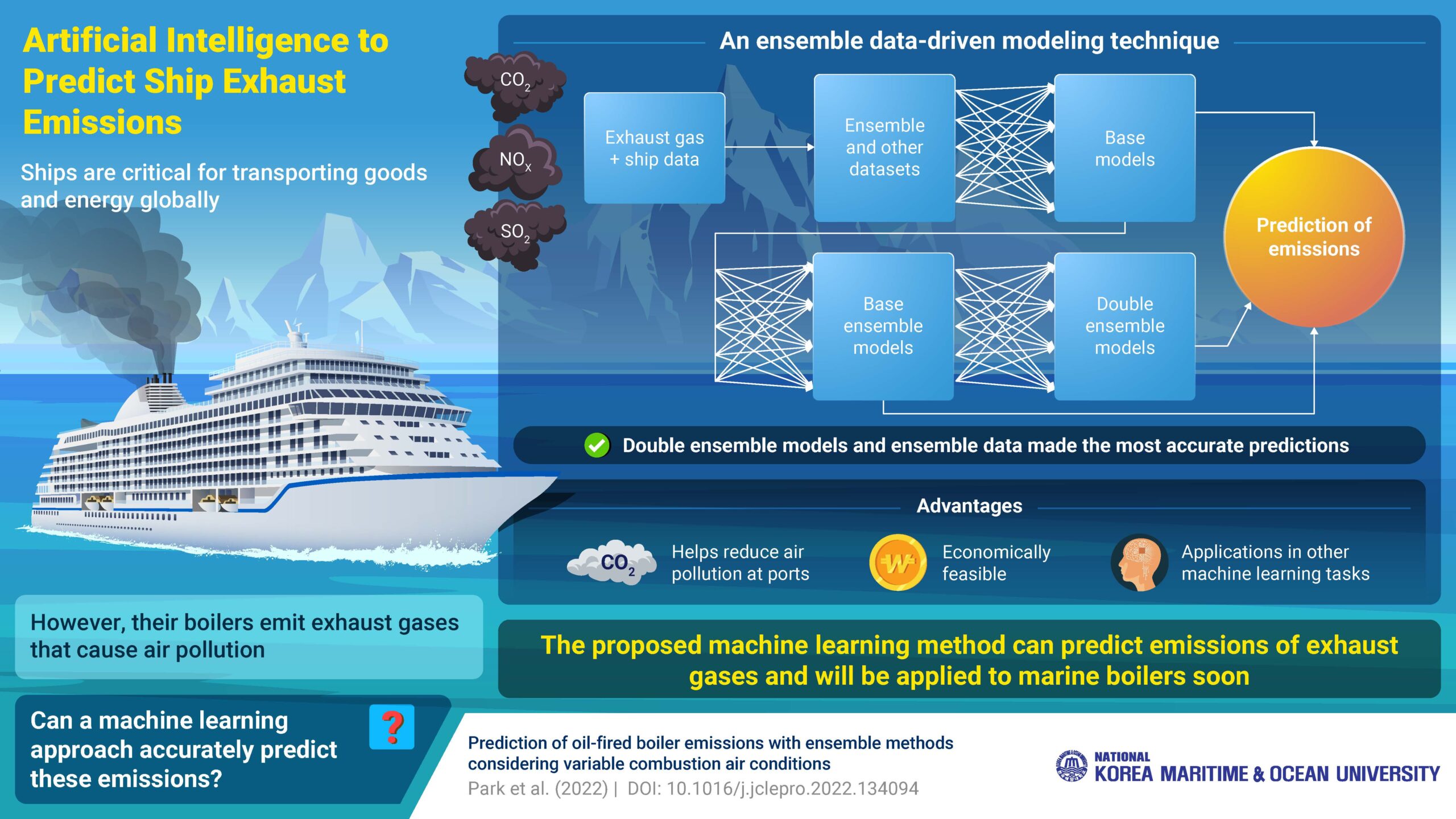New Unsupervised Machine Learning Algorithm to Predict Ship Exhaust Gas Emissions
Leveraging Machine Learning to Help Predict Ship Exhaust Gas Emissions
Ship exhaust gas emissions contribute the largest volume of air pollutants in the global transportation industry. Ships emit exhaust gases such as CO2, SOx, and NOx that cause air pollution in the seas that they sail in and at the ports they dock in. From an environmental safety point of view, predicting the ship exhaust gas emissions can help understand greenhouse emissions trends and their impact on our lives. Predicting the levels of these emissions is important from an environmental standpoint, so South Korean researchers have explored data-driven modeling techniques for accurate emission prediction under variable combustion air conditions. The proposed technology will help reduce the carbon footprint of the shipping industry.
Ships are a major means of commercial transport, contributing to 80% of global goods and energy trade. However, they emit exhaust gases—from the engines when they are sailing, and from the engines and boiler when they dock in ports. These emissions negatively affect not only human health, but also the environment. Therefore, the International Maritime Organization has imposed regulations on the type of fuel used in ships. While efforts are being made to reduce the level of emissions from ships, a completely eco-friendly fuel is yet to be developed. In the meantime, assessing and predicting the level of exhaust emissions from ships is of paramount importance.
 Given this background, a group of researchers from the National Korea Maritime and Ocean University (NKMOU) led by Dr. Won-Ju Lee, an Associate Professor in the institute’s Division of Marine System Engineering, have measured the emissions of a continuously operating oil-fired boiler in a training ship under different air-to-fuel ratios. “The exhaust data for CO2, NOx, and SO2 gases were collected for 18 cases and used for predicting emissions through data-driven modeling,” explains Dr. Lee.
Given this background, a group of researchers from the National Korea Maritime and Ocean University (NKMOU) led by Dr. Won-Ju Lee, an Associate Professor in the institute’s Division of Marine System Engineering, have measured the emissions of a continuously operating oil-fired boiler in a training ship under different air-to-fuel ratios. “The exhaust data for CO2, NOx, and SO2 gases were collected for 18 cases and used for predicting emissions through data-driven modeling,” explains Dr. Lee.
Their work was made available online on 18 September 2022 and published in Volume 375 of the Journal of Cleaner Production on 15 November 2022.
The researchers employed unsupervised learning to compress the original data for generating three new datasets. They combined them to create an ensemble dataset. The performance of these five datasets was evaluated – in terms of CO2, NOx, and SO2 predictions – using four base models. The Support Vector Machine-based models with the original and ensemble datasets produced the best results. Then, the researchers merged the base models to develop four base ensemble models. These models, in turn, were used to build double ensemble models. As expected, the double ensemble models made the most accurate emission predictions for all three gases.
Lastly, the researchers applied the developed models to a new dataset, verifying the results and establishing the models’ superiority and generalizability.
In the past, AI researchers had used multi-task deep learning model to analyze the ship exhaust plume and collected data to train neural networks based on optical remote-sensing method. In another research, AI models were identified to improve ship fuel consumption efficiency.
So, AI Machine Learning models have been part of shipping industry for some time now.
How can this work help the shipping industry reduce its carbon footprint, though?
Dr. Lee discusses the future implications of their work. “The results of this study can be used to predict emissions of exhaust gases and will be applied to marine boilers soon. It shall enable the marine engineers to take action to reduce emissions, curbing air pollution in port areas. Since installing expensive equipment such as gas analyzers in boilers is not economically feasible for shipping companies, the proposed technology will prove indispensable. Furthermore, the ensemble data generation and double ensemble model techniques can enhance the performance of various other machine learning applications.”
Here’s to achieving carbon neutrality, enabled by technology and artificial intelligence models!
Reference
DOI: https://doi.org/10.1016/j.jclepro.2022.134094
Authors: Min-Ho Park (1,2), Jae-Jung Hur (3), Won-Ju Lee (2,3)
Affiliations:
- Division of Marine Engineering, Korea Maritime and Ocean University, Republic of Korea
- Interdisciplinary Major of Maritime and AI Convergence, Korea Maritime and Ocean University, Republic of Korea
- Division of Marine System Engineering, Korea Maritime and Ocean University, Republic of Korea

Comments are closed.